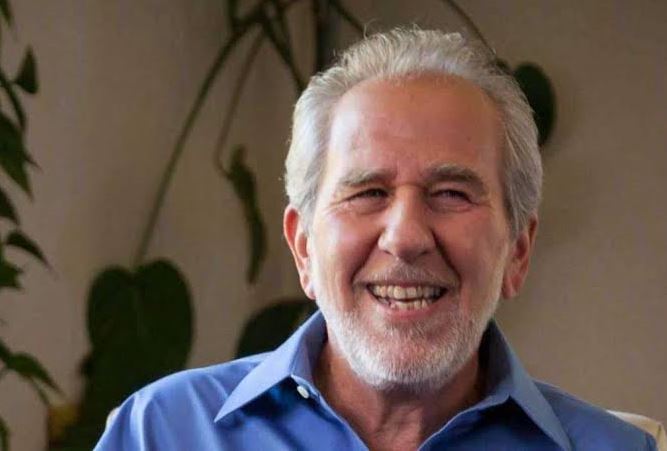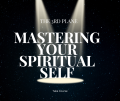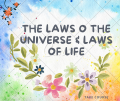
In this article, we analyse Bruce Lipton’s discussion of the interconnectedness of energy, thought, and reality. Lipton argues that our thoughts are units of energy, and that using this energy on unproductive or negative thoughts is akin to wasting money. He emphasizes the importance of consciously directing energy towards positive, life-enhancing thoughts, as these shape our reality and impact our health, citing the influence of both the conscious and subconscious minds in this process. Ultimately, the video advocates for mindful living and the power of positive self-programming through repetition and affirmations to overcome limiting beliefs and achieve desired outcomes.

1. How are thoughts related to energy and our reality?
Thoughts are units of energy that shape our reality. According to quantum physics, consciousness is the primary creative force in the universe. Our thoughts, which are essentially vibrations, go out into the field of energy around us and resonate with things that match their frequency. Therefore, focusing on positive thoughts attracts positive experiences, while dwelling on negative thoughts brings about negative manifestations. Wasting mental energy on unproductive thoughts is akin to squandering our life force.
2. What is the difference between the conscious and subconscious mind, and how do they affect our lives?
The conscious mind is the seat of our individual identity, our spirit. It’s where our desires, wishes, and intentions reside. The subconscious mind, on the other hand, stores learned behaviors and habits. While the conscious mind is creative, the subconscious primarily plays back pre-recorded programs. Unfortunately, many of these subconscious programs are negative and self-sabotaging, learned from others during our formative years. This explains why our lives often don’t reflect our conscious desires – we’re operating on autopilot, driven by limiting subconscious beliefs.
3. How can we reprogram our subconscious mind to align with our conscious desires?
Since the subconscious mind learns through repetition, we need to consciously and repeatedly affirm our desired state, even if it doesn’t match our current reality. Techniques like affirmations and visualization are powerful tools for reprogramming. For instance, if you desire health, repeatedly affirm “I am healthy” as if it’s already true. This sends a new vibration out into the universe and instructs your subconscious to work towards manifesting that reality.
4. What is the significance of the “terror barrier,” and how can we overcome it?
The terror barrier represents the fear and anxiety we experience when stepping outside our comfort zone and pursuing something new. This fear often stems from our conditioning and the uncertainty of the unknown. To break through this barrier, we must acknowledge the fear but choose to move forward regardless. Pushing past this fear leads to freedom and the realization of our goals.
5. What is “buyer’s remorse,” and how is it connected to the terror barrier?
Buyer’s remorse is the regret we feel after making a decision, often leading us to back out of opportunities that could have been beneficial. It’s a symptom of hitting the terror barrier. We get excited about a new possibility, but fear pulls us back into our comfort zone, causing us to sabotage our own progress.
6. What role does self-image play in our overall success and well-being?
Our self-image, our internal perception of ourselves, shapes our external reality. A positive self-image leads to confidence and greater success in all areas of life, while a negative self-image can result in self-sabotage and a diminished quality of life. By consciously working on improving our self-image through self-knowledge and positive affirmations, we can transform our lives.
7. How does our environment influence our thoughts and behaviors?
Our environment, particularly the people we surround ourselves with, has a significant impact on our thinking and behavior. We tend to absorb the beliefs and attitudes of those closest to us. To foster positive change, it’s crucial to surround ourselves with supportive and inspiring individuals who encourage our growth.
8. What is the importance of continuous learning and self-discovery?
Lifelong learning is vital for personal growth and the expansion of consciousness. By constantly seeking new knowledge and understanding, we challenge our limiting beliefs and expand our awareness of ourselves and the world around us. This continuous exploration helps us discover our true purpose and live more fulfilling lives.
Understanding Frequencies, Vibrations, and the Law of Attraction: A Study Guide
I. Key Concepts Review:
This section focuses on understanding the core ideas presented in the excerpts from “How to Understanding Frequencies, Vibration, and the Law of Attraction With Bruce Lipton.”
A. Energy and Thought:
- Lipton equates money to energy, emphasizing the importance of responsible energy management in life. How does this analogy relate to our thoughts and actions?
- He highlights the significant energy expenditure of the brain, particularly in relation to negative thought patterns. What implications does this have for our overall well-being?
B. Consciousness and Reality:
- The excerpts introduce the concept of consciousness as the primary creative force in the universe. How does this align with the findings of quantum physics and the idea that “the universe is a great thought”?
- Lipton differentiates between the conscious and subconscious minds. What are their distinct roles, and how do they interact to shape our reality?
C. Programming and Manifestation:
- The subconscious mind is described as a repository of learned behaviors and programs, often disempowering. How do these programs influence our ability to manifest our desires?
- Lipton advocates for “being mindful” and consciously directing our thoughts to align with our desired reality. How can practices like repetition and “faking it till you make it” help reprogram the subconscious mind?
D. The Power of Belief:
- The excerpts emphasize the transformative power of belief. How does our self-image and belief in our abilities influence our overall life experience, including relationships, finances, and health?
- Lipton encourages continuous learning and reevaluation of our beliefs. What role does knowledge and self-discovery play in shaping our beliefs and ultimately our reality?
E. Overcoming Barriers:
- The “terror barrier” is presented as a significant obstacle to personal growth and freedom. What constitutes this barrier, and what strategies does Lipton suggest for overcoming it?
- Lipton stresses the importance of choosing our environment and surrounding ourselves with supportive individuals. How does our social circle influence our thoughts, beliefs, and ultimately our success?
II. Short Answer Quiz:
- Explain the analogy between money and energy as presented by Lipton. How does this relate to the concept of an “energy budget” for our thoughts and actions?
- According to Lipton, how does the high energy consumption of the brain relate to the potential negative impact of fear-based thinking?
- Summarize the findings of quantum physics regarding the nature of the universe and the role of consciousness.
- Differentiate between the conscious and subconscious minds. How do they contribute to the creation of our reality?
- What does Lipton mean by stating that the subconscious mind is programmed? How can these programs be both beneficial and detrimental?
- Explain the concept of “mindfulness” and its importance in manifesting our desires. Provide an example of a mindfulness practice.
- How does the phrase “fake it till you make it” apply to reprogramming the subconscious mind and achieving desired outcomes?
- According to Lipton, how does our self-image impact our overall life experience? What are some ways to improve our self-image?
- What is the “terror barrier,” and how does it prevent individuals from achieving their goals and experiencing freedom?
- Why does Lipton emphasize the importance of surrounding ourselves with positive and supportive individuals? How can our social circle impact our success?
III. Answer Key:
- Lipton uses the analogy of money as energy to emphasize that, like financial resources, our energy is finite and should be managed wisely. Just as we carefully consider how we spend money, we should be mindful of how we invest our energy in thoughts and actions. Wasting energy on unproductive thoughts or activities depletes our “energy budget” and hinders our overall well-being.
- The brain requires a significant amount of energy to function, especially when engaged in complex thought processes. When we consistently engage in fear-based or negative thinking, we deplete our energy reserves and may experience mental fatigue, reduced cognitive function, and weakened immunity.
- Quantum physics reveals that the universe is not composed of solid matter but rather a vast field of energy and information. Consciousness plays a central role in shaping this reality, meaning that our thoughts and intentions influence the material world. This supports the idea that “the universe is a great thought” and emphasizes the interconnectedness of consciousness and reality.
- The conscious mind represents our individual awareness and contains our desires, wishes, and intentions. The subconscious mind, however, stores learned behaviors, beliefs, and emotional patterns, primarily acquired through early childhood experiences. It operates automatically, influencing our actions and reactions without conscious awareness. Both minds contribute to creating our reality, with the subconscious often driving behavior that may not align with our conscious desires.
- The subconscious mind is programmed through repeated experiences and learned associations. These programs can be beneficial, leading to automatic skills like driving or typing, but also detrimental, resulting in limiting beliefs and self-sabotaging behaviors. These ingrained patterns often originate in early childhood and can unconsciously influence our choices and actions throughout life.
- Mindfulness involves intentionally focusing on the present moment without judgment, cultivating awareness of our thoughts, feelings, and sensations. This practice allows us to observe our automatic subconscious patterns and choose more aligned actions. Mindfulness techniques include meditation, deep breathing, and body scan exercises.
- “Fake it till you make it” suggests that by consciously acting as if we already possess a desired quality or have achieved a goal, we can reprogram the subconscious mind. By repeatedly engaging in positive self-talk and behaving in alignment with our desires, we create new neural pathways and reinforce positive beliefs, eventually leading to genuine change.
- Our self-image, encompassing our beliefs about ourselves, deeply impacts our experiences. A positive self-image fosters confidence, resilience, and attracts positive opportunities. Conversely, a negative self-image can lead to self-sabotage, limiting beliefs, and attracting negative experiences. Improving self-image involves challenging negative thoughts, focusing on strengths, and engaging in self-care practices.
- The “terror barrier” represents the fear and resistance we encounter when stepping outside our comfort zone and pursuing significant growth. It manifests as doubt, anxiety, and the urge to retreat to familiar patterns. Overcoming this barrier requires courage, self-belief, and persistent effort to move towards our desired goals despite the initial discomfort.
- Our social circle profoundly influences our thoughts, beliefs, and ultimately, our success. Surrounding ourselves with positive, supportive individuals exposes us to new perspectives, encourages growth, and provides emotional support during challenges. Conversely, negative or limiting individuals can reinforce negative beliefs and hinder our progress.
IV. Essay Questions:
- Analyze the concept of “energy budgeting” as it pertains to our thoughts and actions. How does this concept relate to the Law of Attraction and the manifestation of our desired reality?
- Discuss the interconnectedness of consciousness and reality as explained by Lipton. How does this concept challenge the traditional scientific worldview, and what implications does it have for our understanding of personal power and responsibility?
- Critically evaluate the influence of subconscious programming on our thoughts, behaviors, and ability to manifest our desires. To what extent do we have control over these programs, and how can we reprogram them for greater personal fulfillment?
- Explore the transformative power of belief as presented by Lipton. Drawing upon personal experiences and examples, explain how our beliefs shape our reality and influence our overall life experience.
- Explain the concept of the “terror barrier” and its role in hindering personal growth and the achievement of our goals. Discuss strategies for overcoming this barrier and provide examples of how you have personally navigated this challenge in your own life.
V. Glossary of Key Terms:
- ATP: Adenosine triphosphate, the primary energy currency of cells.
- Conscious Mind: The aspect of our mind responsible for conscious awareness, thoughts, and intentions.
- Electroencephalograph (EEG): A device that measures electrical activity in the brain.
- Energy Budget: A metaphor for the finite amount of energy we have available for thoughts and actions.
- Law of Attraction: The principle that like attracts like, meaning our thoughts and beliefs attract corresponding experiences.
- Magnetoencephalograph (MEG): A device that measures magnetic fields produced by electrical activity in the brain.
- Mindfulness: The practice of intentionally paying attention to the present moment without judgment.
- Paradigm: A set of beliefs, values, and assumptions that shapes our perception of the world.
- Resonance: The phenomenon of two or more objects vibrating at the same frequency.
- Subconscious Mind: The aspect of our mind that stores learned behaviors, beliefs, and emotional patterns, operating primarily below conscious awareness.
- Terror Barrier: The fear and resistance encountered when stepping outside our comfort zone and pursuing significant growth.
- Theta Hypnosis: A state of deep relaxation and suggestibility associated with the theta brainwave frequency, prevalent in early childhood and during sleep.
- Vibration: The oscillatory motion of energy, believed to be the fundamental building block of reality.
The original discussion video is here






















0 responses on "Understanding Energy, Consciousness, and the Law of Attraction"